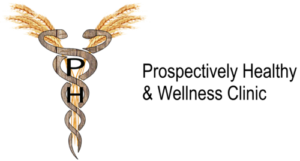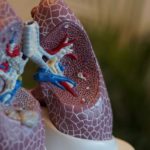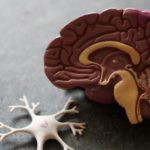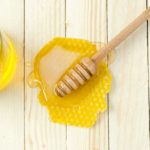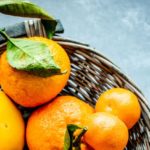Cold Remedies & Prevention
Author: Jessica Moffitt, BS, CHES
Understanding colds, the symptoms associated, and how to support your body in the natural healing process with healthy cold remedies and prevention.
Medical Terms:
The Cold and the Flu are both viral infections. This means that at some point we were exposed to a virus that has made it into our bodies. Different viruses cause colds and the flu, and even different versions of the flu. They rotate from year to year, and morph as we can create pharmaceutical remedies.
The symptoms of the cold and the flu are often overlapping. Today we will list a group of symptoms, and then we will sort them into bodily responses for fighting the viruses. We will finish the class with some natural cold remedies to help the body fight the virus and prevention that can aid in the biological functions we already have in place.
Symptoms:
Congestion
Runny Nose
Sneezing
Sore Throat
Chest Pain
Shortness of Breath
Dizzy / Lightheaded
Cough
Headache
Ear Pain
Muscle Ache
Swollen Lymph Nodes
Chills/Fever
Sweating
Nausea/Vomiting
Diarrhea
Loss of Appetite
Lack of Energy
Systems:
Upper Respiratory System
Let’s first look at the symptoms above that have to do with our RESPIRATORY SYSTEM. The respiratory system consists of the nose, the sinus cavity, the larynx and pharynx (within the throat), the lungs, and the bronchioles. In a healthy adult, we breathe in air through our nose, which filters and warms the air, as well as cleaning it from debris, prior to allowing it to travel down the back of our throat, into the bronchioles, and finishing with filling the lungs full of fresh air. When the diaphragm contracts, the air is pushed back out, and the nutrients from our air (the oxygen) binds to our blood and travels throughout our bodies.
Symptoms such as SNEEZING, RUNNY NOSE, and CONGESTION come from disturbances at the very beginning of our respiratory system. Tiny particles of debris make it through our nose, and into our sinuses (which sit right between our eyes at the top of our nose). This causes an inflammatory response in our sinus cavity, and then the body attempts to remove the debris through SNOT and SNEEZING. Sinus congestion is caused by the inflammatory response causing swelling and blocking some of the respiratory pathways for oxygen flow. This is also often caused by debris, bacteria, or virus in the sinus region.
Secondary symptoms such as a SORE THROAT are sometimes caused by a POST NASAL DRIP- when the sinus cavities drain down the backside of the respiratory tract instead of out the nose. The mucus causes an irritation which is results in a sore throat. Sometimes sore throats are a primary symptom- meaning there is a direct cause. Sore throats can be causes by a bacterial or viral infection within the throat, particularly the streptococcus bacteria.
Lower Respiratory System:
Traveling down the respiratory system we enter our power house- alveoli within our lungs fill with oxygen, and the blood carries it to other areas. If fluid from our upper respiratory system is not properly disposed of, it can travel down into our lungs. This creates an abnormal weight in the lungs, which causes strain on the diaphragm, making it difficult to expand and contract a full breath of air. This creates a sense of SHORTNESS OF BREATH, and often the DIZZINESS, or LIGHTHEADEDNESS that is associated with viral infections.
A COUGH is often associated with viral infections because of our respiratory system. There are two forms of cough: dry/non-productive, or wet/productive. A wet or productive cough is when there is fluid in the lung space or respiratory space that we can dislodge or move with a cough. Sputum is the phlegmy substance that comes up with a cough. A dry or non-productive cough is either when the fluid does not move, or when the fluid does not exist. Dry coughs are often associated with debris such as dust in the lungs, or from dryness of the respiratory system.
Though not directly linked to the respiratory tract, some symptoms of the cold and flu are caused because of inflammation in the respiratory system. When our sinus pressure becomes too great from inflammation and irritation, it often causes a HEADACHE, and sometimes even pain in our facial features such as our eyes. Other forms of headaches come from dehydration, lack of movement, or from the body trying to alert us that something is wrong.
Nervous System:
EAR PAIN is also a commonly associated symptom. When the respiratory system inflames, it pushes on the nasopharynx, and on other surrounding structures, causing fluid to become trapped behind the ears, creating pressure. It is often described as a dull, throbbing sensation. Sharp or shooting pains are characteristic of a bacterial or viral infection in the ear and are different than generalized ear pain.
Musculoskeletal System:
Migrating away from the respiratory system, we can look at our skeletomuscular system- a combination of our bones and muscles. As we are exposed to a virus or bacteria, our bodies use white blood cells to help boost the immune system and fight the infection. However, white blood cells are necessary for helping facilitate movement and healing in our muscles after we have used them. When the body is infected, it must prioritize where the white blood cells are used. It will also generate more white blood cells to help fight against the infection and clean it up. This leaves our muscles without help to recover, thus causing ACHES AND PAINS similar to those associated with arthritis or a heavy workout.
Immune System:
When the immune system goes into overdrive working to destroy cells infected with the virus or bacteria, our lymphatic system is also filtering. Think of it as an internal cold remedy, whereas the above systems are designed for cold prevention .The lymphatic system is a series of vessels that drain lymph from the interstitial fluid (the fluid that surrounds our cells and is in our plasma). When this system is in overdrive, it can cause SWELLING IN THE NODES, where the lymph is filtered and lymphocytes (white blood cells that release antibodies) are working to fight the bacteria. Common areas of inflammation are under the jawline, next to our collar bones, and in our armpits.
Our immune system is also responsible for FEVERS and CHILLS. Viruses and bacteria have a very specific temperature range that they can survive in. The immune system uses thermo-regulation to try and kill off the bacteria. Thus, the flu and colds are often associated with fevers. When our fever gets to high, or when the brain tells the immune system, it will rapidly cool itself off, usually via SWEATING. This sometimes results in chills from the rapid change in temperature. Conversely, when fever reduces are used, our body may try to induce chills to kill off the bacteria.
As our body is using every system to try and fight the bacteria or virus, it only makes sense to pull in the digestive system. As a means of disposing unnecessary nutrients (and sometimes toxic waste), our body may use the digestive system as a way of rapidly disposing of an infection. Most commonly, this is through DIARRHEA or VOMITING. Feelings of NAUSEA often associate infections for this reason.
Secondary Symptoms:
The last two symptoms we are going to talk about are LACK OF ENERGY and LACK OF APPETITE. These symptoms are really a secondary symptom to everything above. There is only a limited amount of brain power we can use at any one given time, and when we are malnourished (which often comes from poor eating while sick) and dehydrated (a combination of lack of fluids and fluid loss) our body runs out of brainpower for things like hunger responses, and it also begins to fatigue, leaving us feeling exhausted or out of energy.
Cold Remedies:
Many pharmaceuticals exist to hinder the symptoms we have been talking about today. By hindering these symptoms, we are suppressing the body’s ability to fight the infection. This is not to say that certain conditions, such as fevers above 103.5 degrees Fahrenheit, severe dehydration, shortness of breath, or fluid in the lungs are not serious in nature or that they wouldn’t require a pharmaceutical or medical intervention to prevent it from migrating into something more serious. However, in small exposures or for short periods of time, we can help the body fight the infection by giving it the tools it needs.
Here are some tried-and-true cold remedies:
You can find most of these on our online store, under the supplements tab.
Sore Throats:
Eucalyptus, herbal tea, and honey are great ways to coat the throat, relieving some of the irritation and helping lower the histamine response.
Coughing:
When we have a dry cough, providing liquids that will help nourish the systems will provide relief. Bone broth and other foods high in omegas and fish oils are great options. When the cough is wet, the best we can do is get the fluid out. A steam inhale with antimicrobial and antibacterial essential oils will help clear up the infection in the lung and help us breathe more freely. Mucinogens such as bromelain and vitamin C are natural expectorants that can clear us safely.
Nasal:
The best way to relieve congestion and runny noses, as well as sneezing, is to remove the debris from the nose. Blow your nose (don’t sniff!!). Sinus rinses such as neti-pots are great ways to get fluid moving again and relieve pressure. Trained professionals also can help relieve sinus pressure and promote movement. You can do it yourself by following the arrows on sinus flow on the attached document.
Dryness:
A lot of symptoms of the cold and flu are caused by dryness. Humidifiers are a wonderful way of getting water back into the air, and helping our systems recover faster and more efficiently. You can use antimicrobial and healing essential oils in your humidifier, such as eucalyptus, tea tree, lavender, peppermint, and rosemary to provide additional healing properties.
Headaches and Muscle Aches:
These can be relieved by helping our bodies recover naturally. Epsom salt baths are a wonderful way of doing so. Use water that is as warm as your body can handle and stay in the bath as it cools down. It will bring the blood vessels to the surface and encourage blood flow, which will help the body process our stagnation in the muscles. Natural headache remedies such as magnesium, lavender, and herbal teas are also great for relieving headaches causes by tension and sitting still. Try adding some lavender bubble bath to your Epsom salts, or put some on a cloth at the base of the shower a take a hot shower.
Fevers:
This is a big one. Many people want to take a fever reducer at the onset of a fever. A low-grade fever is not a health risk and can be a great way for the body to fight infections. Bundling up under blankets and layers of clothes can help the body maintain temperature and fight an infection. At night, you can try wet socks! Take a pair of cotton tube socks and get them wet with cold water. Put them on your feet, and then a second pair of dry, wool socks on top. The coolness will trick the body into thinking its cold, and well prevent the onset of chills. It will naturally increase the body temperature and help kill off the bacteria, and you will wake with dry feet! Add lavender essential oils to the bottom of your feet to relax the nervous system as a bonus.
Digestive Disturbances:
Nausea, vomiting, and diarrhea are disturbances of the digestive tract. Stay hydrated with lots of fluids and keep your sugar intake low. Bacteria grow off sugar- so thinks like sprite and dairy will help the bacteria multiply and spread. Try to avoid these. Instead, you can blend an orange or lime in a blender and add it to club soda or sparkling water. Bone broth is a wonderful way of providing healthy nutrients while sick. Homemade soups full of vegetables, cooked low and slow, are a great way of nourishing the body. Though they may be soothing, crackers are also full of sugars and should be avoided (unless calorie intake is very low, and food is not settling well, in which case something is better than nothing).
Elixirs:
A lot of tinctures and herbal concoctions can be great for helping the body fight infections. Our Fire & Ice drink is a great way to warm up the body and provide healthy fuels. Ginger, garlic, turmeric, cayenne, cinnamon, lemon, apple cider vinegar, and kombucha are great probiotics to consume while sick.
All in all, it comes down to this:
Trust your body. Help is when you can. Your body is meant to prevent colds, has natural cold remedies built into it’s systems, and has a lot of great prevention tips, all on it’s own. Eat a balanced and nutritious diet to supply these systems with the fuel they need to succeed. Avoid suppressing them as much as possible. And get help from a qualified physician if you are worried about your symptoms. If you are using an over-the-counter medication, try for ones that are low in sugar and do not contain harmful chemicals such as food dye. A healthier choice is a healthier choice, no matter how small.
References:
Bastyr University. (n.d.). Dive Feet First Wellness Natural Remedy. Retrieved from Bastyr Health.
Douglas, R. (2007, July). Vitamin C for preventing and treating the common cold. Retrieved from National Library of Medicine.
Gaby, A. R. (2011). Nutritional Medicine. Concord: Fritz Perlberg Publishing.
Herbal Academy. (2014, January). Herbal Home Remedies for Colds and Flu. Retrieved from Herbal Academy.
Mallappa, K. (2016, December). Antimicrobial Properties of Plant Based Essential Oils. Retrieved from US National Library of Medicine:
Marieb, E. (2015). Human Anatomy and Physiology. Pearson.
Ophir, D. E. (1987, May). Effects of steam inhalation on nasal patency. Retrieved from PubMed.
Satzke, J. (2015, Dec). Epsom Salt Really Good For Your Muscles. Retrieved from Penn State.

From the Author:
“My name is Jessica Moffitt and I am a Certified Health Education Specialist. I have a Bachelors in Community Health, with an emphasis in physical activity and exercise, as well as an additional certification that allows me to serve as a resource to the community for information about health topics such as nutrition, cooking, and healthy lifestyles. I do my best to research topics that are of interest in the community, and then host a class at various businesses both in town and online.
The goal of my material is simple: to provide the community with information about a health topic. I hope that by the end of today’s course, you feel informed. It is important for me to tell you that today’s class is simply that- educational. You can choose to apply the information to your life today, in a year, or never. What choices you do or do not make to improve your health are exactly that- your choice. If you walk out of here today fully informed, but still not willing to make a change, I have met my goal.”
